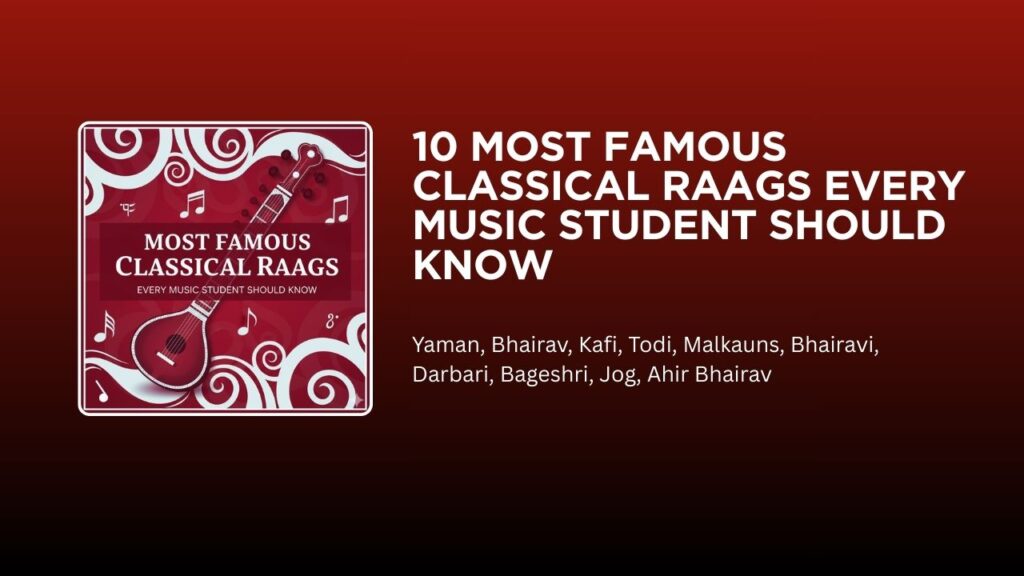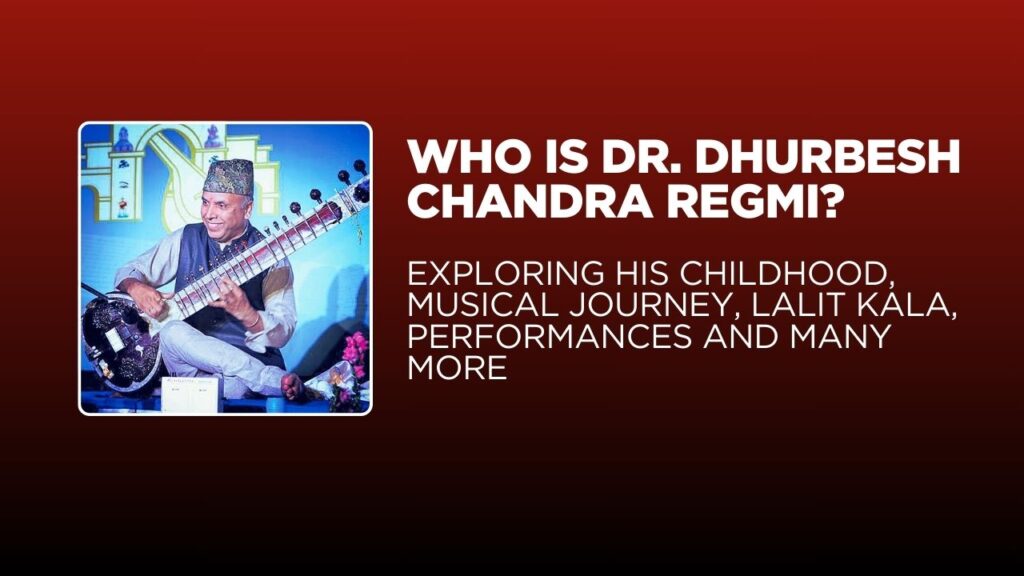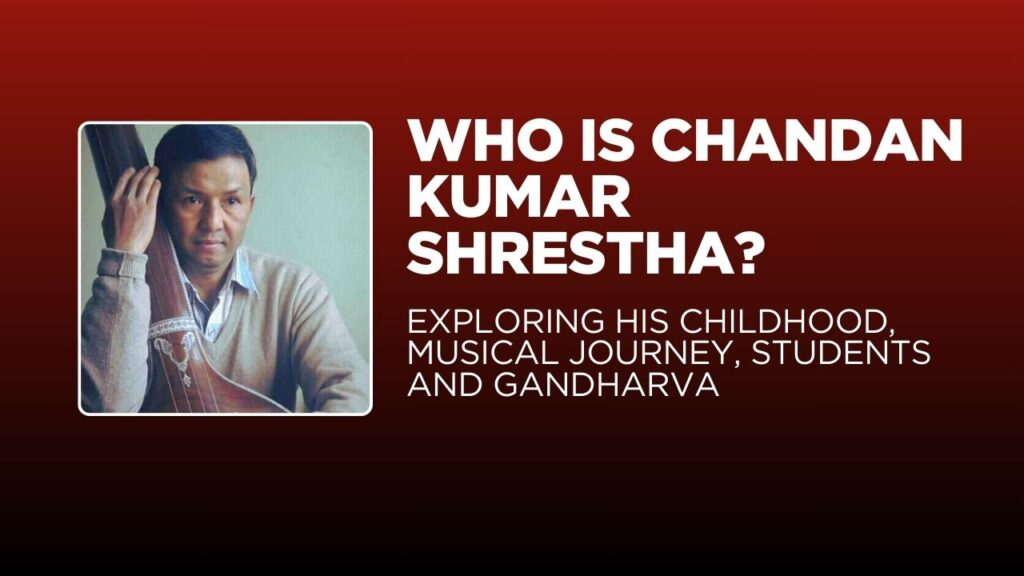The 10 most famous classical raags every music student should know are the building blocks of Indian classical music that have captivated listeners for over a thousand years. Begin with simple ragas like Yaman, Bhairav, or Bhoopali. These ragas have a limited number of swaras and are relatively easy to grasp for beginners. Whether you’re just starting your musical journey or looking to deepen your understanding of classical music, these essential raags will give you a solid foundation to build upon.
Think of raags like different colors on an artist’s palette. Each one creates a unique mood, tells a different story, and connects with specific emotions in your heart. Learning these 10 famous raags is like learning the most important colors that every artist must know.
What is a Raag? Simple Explanation
Before we explore our top 10 list, let’s understand what a raag actually is. A raag (also spelled raga) is like a musical recipe that tells musicians:
- Which notes to use and which ones to avoid
- How to arrange these notes to create beautiful melodies
- What time of day the raag sounds most beautiful
- What emotions the raag should create in listeners
- How to move from one note to another smoothly
Simple Example: Just like a recipe for making tea tells you which ingredients to use and how to mix them, a raag tells musicians which notes to use and how to combine them to create beautiful music.
Key Elements of Every Raag
| Element | What it Means | Why it’s Important |
|---|---|---|
| Aroha | Going up the musical scale | Like climbing musical stairs upward |
| Avaroha | Coming down the musical scale | Like walking down musical stairs |
| Vadi | The most important note | The “king” note that appears most often |
| Samvadi | The second most important note | The “queen” note that supports the king |
| Time | When to sing the raag | Morning raags sound best in morning |
The 10 Most Famous Classical Raags
1. Raag Yaman – The Beginner’s Best Friend
Raag Yaman is like the “Hello” of classical music – it’s the first raag most students learn because it’s friendly, beautiful, and not too difficult. Performed from sunset to late evening, Yaman is full of grace and beauty, evoking a mood of devotion and dedication.
Why Students Love It:
- Uses all seven notes naturally
- Sounds pleasant and peaceful
- Perfect for evening time (6-10 PM)
- Great for beginners to build confidence
What it Feels Like: Imagine sitting by a calm lake during sunset, watching the sky change colors. That peaceful, happy feeling is what Raag Yaman creates in your heart.
Easy Way to Remember: Think “Why-Man” – this raag makes you wonder “why music is so beautiful, man!”
Learning Tip: Start by humming “Sa Re Ga Ma# Pa Dha Ni Sa” slowly. The Ma# (sharp Ma) gives Yaman its special bright sound.
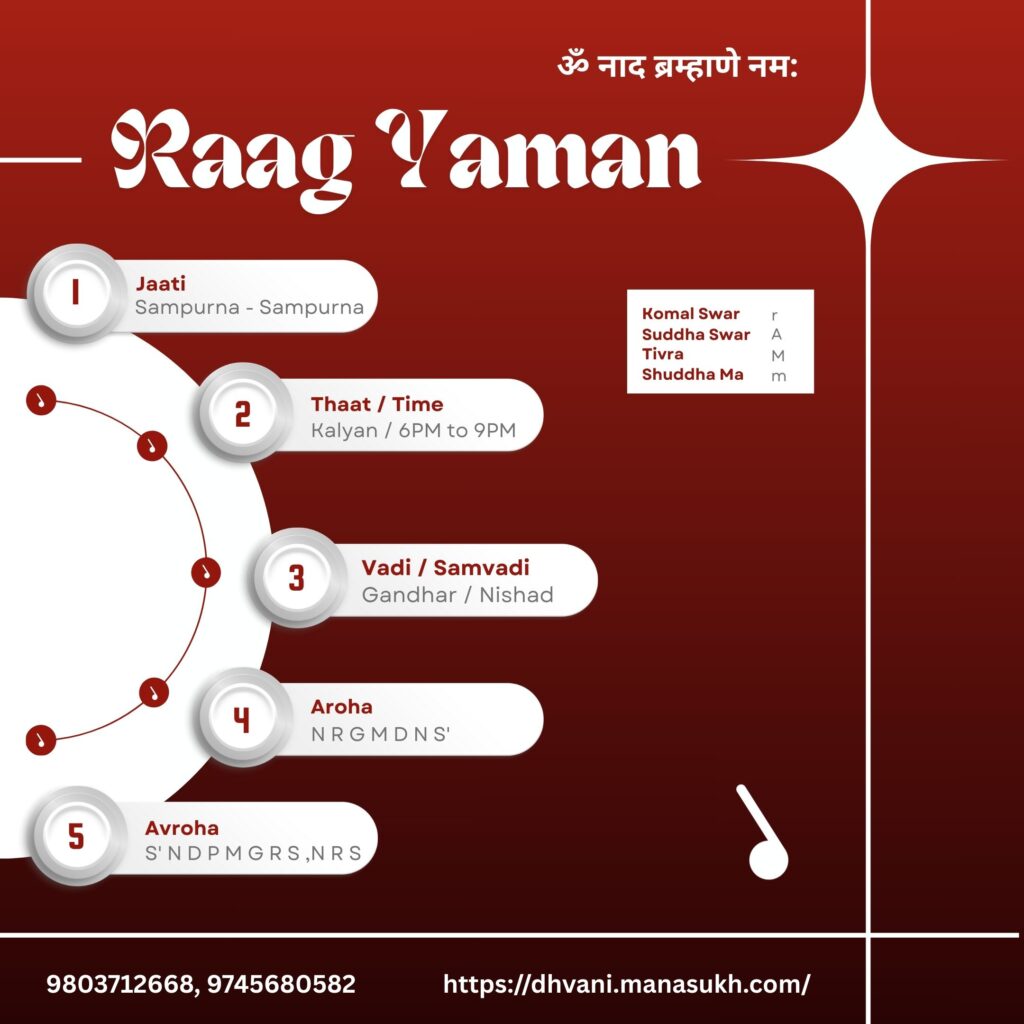
2. Raag Bhairav – The Morning Prayer
Raag Bhairav is like the sun rising in the morning – serious, powerful, and spiritually uplifting. It is a raga that is equally and evenly paced through its singing patterns. Such ragas are suggested to be practiced in the early morning hours – usually, it’s the first raga you begin your practice with.
Special Characteristics:
- Sung during early morning (5-8 AM)
- Creates feelings of devotion and respect
- Uses flat Re and flat Dha notes
- Sounds serious and dignified
What it Feels Like: Like praying in a quiet temple at sunrise, feeling connected to something greater than yourself.
Easy Way to Remember: “Bhai-rav” sounds like “Bhagwan-rav” – it’s the raag for connecting with the divine.
Learning Challenge: The flat notes (komal Re and komal Dha) need careful practice to sound pure and devotional.
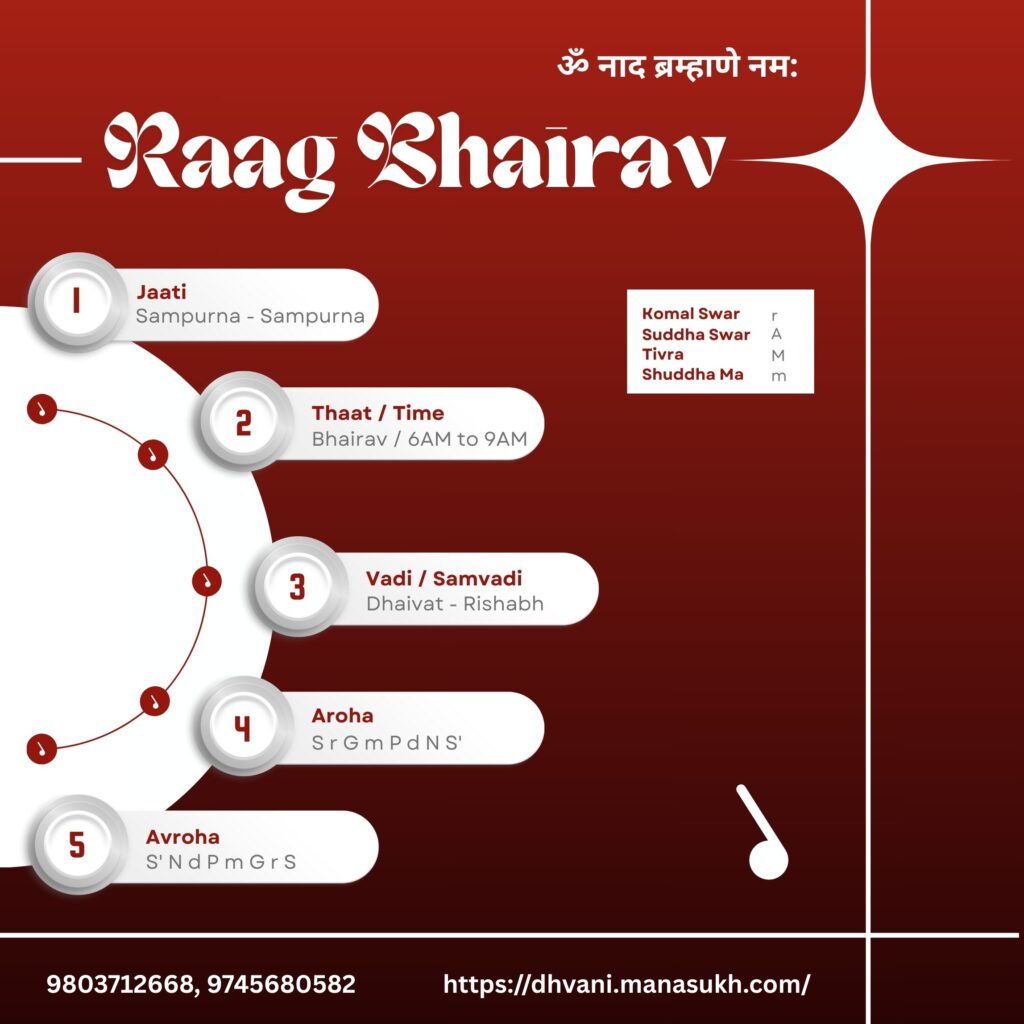
3. Raag Kafi – The Happy Folk Song
Raag Kafi is like your favorite folk song that everyone can sing along with. It’s the most natural-sounding raag because it uses notes that feel familiar to everyone.
Why Everyone Loves It:
- Uses only natural notes (no sharps or flats)
- Sounds like folk songs people grew up with
- Can be sung at any time of day
- Perfect bridge between folk and classical music
What it Feels Like: Like sitting around a campfire with friends, singing songs that make everyone smile and feel at home.
Easy Way to Remember: “Kafi” rhymes with “coffee” – it’s comfortable and familiar like your morning coffee.
Fun Fact: Many popular Bollywood songs are based on Raag Kafi because it sounds so natural and appealing to everyone.
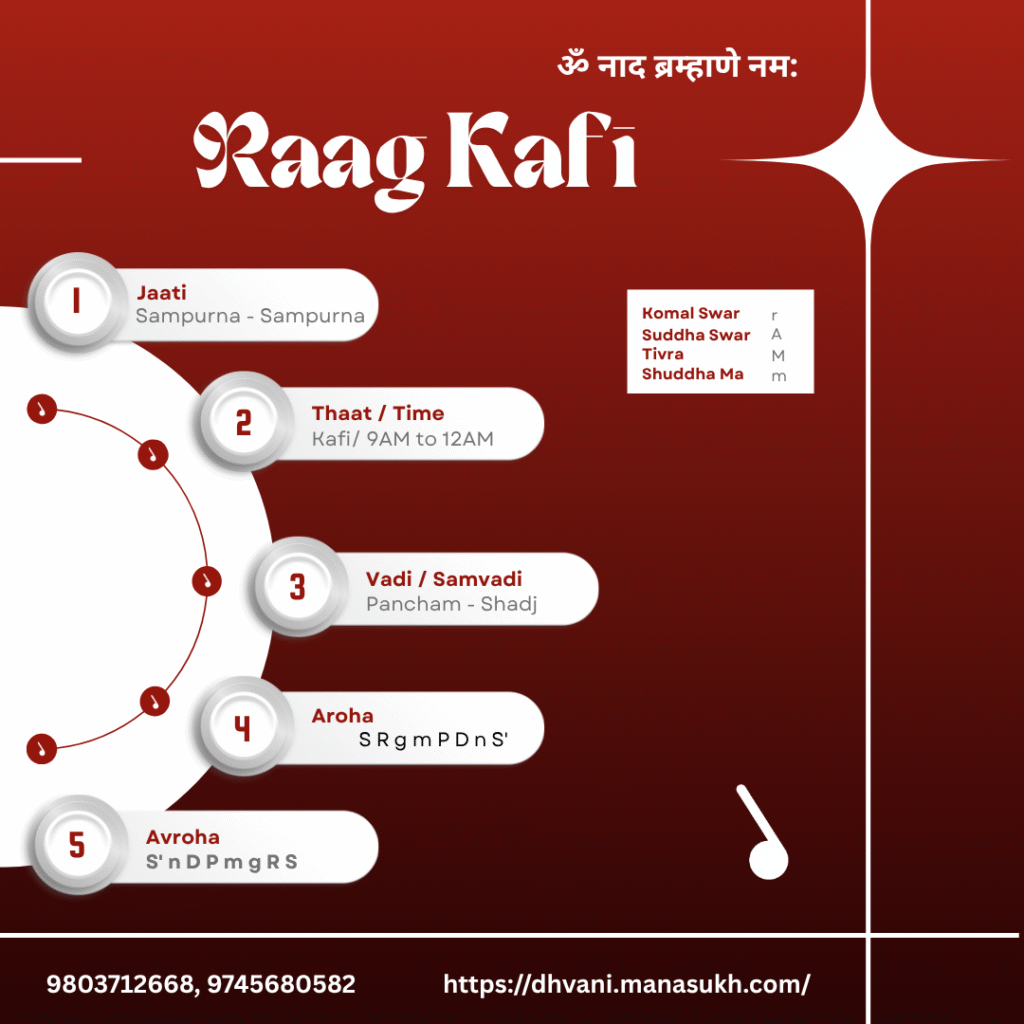
4. Raag Todi – The Beautiful Challenge
Raag Todi is like a beautiful flower that needs careful handling. Todi is characterized by its gentle and lyrical quality. It’s often associated with love and longing, and its melodic beauty has captivated musicians for centuries.
What Makes it Special:
- One of the most beautiful raags in classical music
- Sung in late morning (9-12 PM)
- Uses four flat notes, creating unique sounds
- Expresses both sadness and beauty together
What it Feels Like: Like looking at a beautiful sunset that makes you feel happy and a little sad at the same time – it’s complex but very moving.
Learning Challenge: With four altered notes (komal Re, komal Ga, teevra Ma, komal Dha), it requires patience and practice to master.
Easy Way to Remember: “Todi” sounds like “today” – it’s the raag for “today I will practice something beautiful but challenging.”
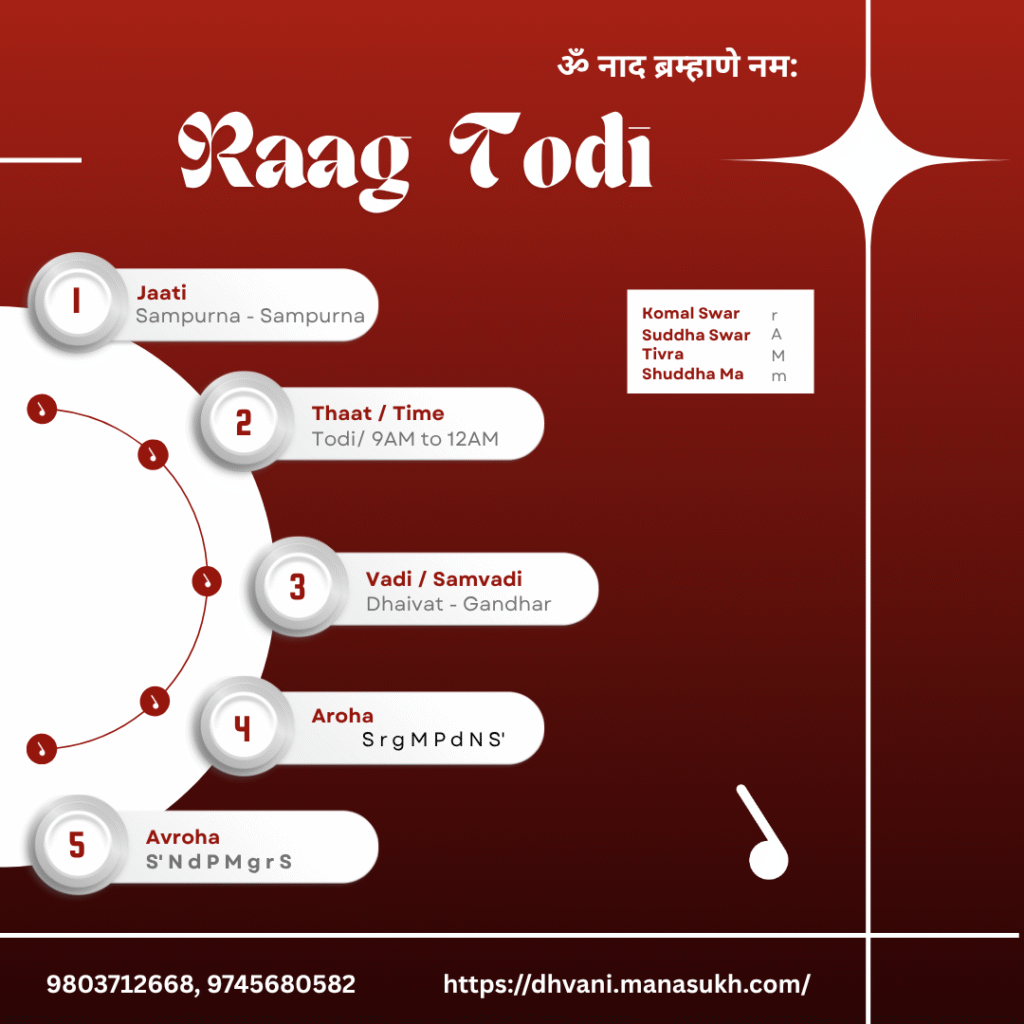
5. Raag Malkauns – The Meditation Master
Raag Malkauns is like deep meditation in musical form. It uses only five notes but creates incredibly powerful and peaceful effects.
Unique Features:
- Uses only five notes (Sa Ma Pa Dha Ni)
- Perfect for late night (10 PM-1 AM)
- Creates deep, meditative moods
- No Re or Ga notes at all
What it Feels Like: Like sitting quietly in a peaceful place at midnight, feeling completely calm and connected to your inner self.
Why Students Find it Fascinating: Even though it uses fewer notes than other raags, it can create more emotional depth than raags with all seven notes.
Easy Way to Remember: “Mal-kauns” – like “Malai” (cream), it’s smooth and rich even with simple ingredients.
Learning Tip: Focus on long, sustained notes. The beauty of Malkauns comes from how long and purely you can hold each note.
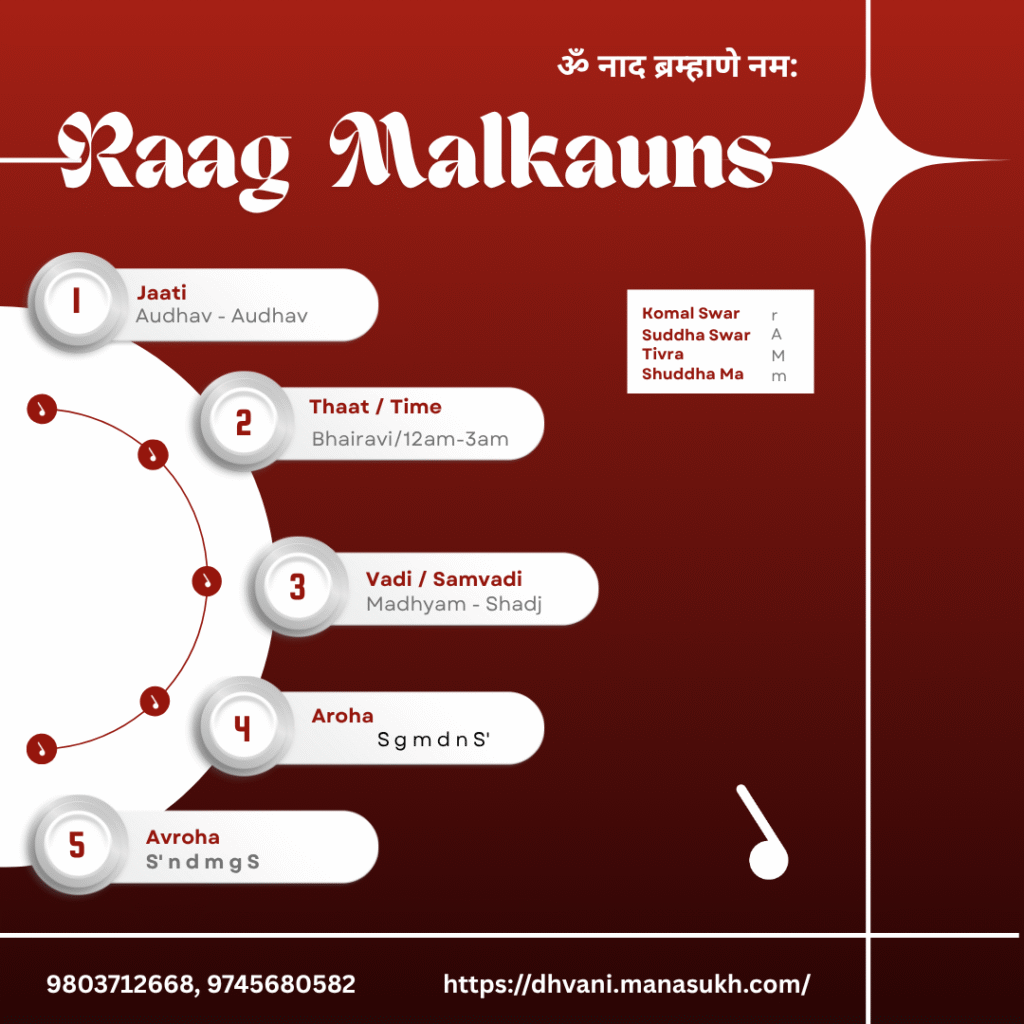
6. Raag Bhairavi – The Emotional Storyteller
Raag Bhairavi is like a grandmother telling stories – it can be sad, happy, serious, or playful, depending on how you sing it.
Versatile Characteristics:
- Can be sung at any time, but traditional early morning
- Uses all flat notes except Sa and Pa
- Can express many different emotions
- Popular in both classical and light music
What it Feels Like: Like listening to someone tell you a story that makes you laugh, cry, and think all at the same time.
Why it’s Student-Friendly: Because it’s so flexible, students can experiment with different emotions and expressions while learning the same raag.
Easy Way to Remember: “Bhai-ravi” – like “Bhai” (brother) and “Ravi” (sun), it’s familiar and warm like family.
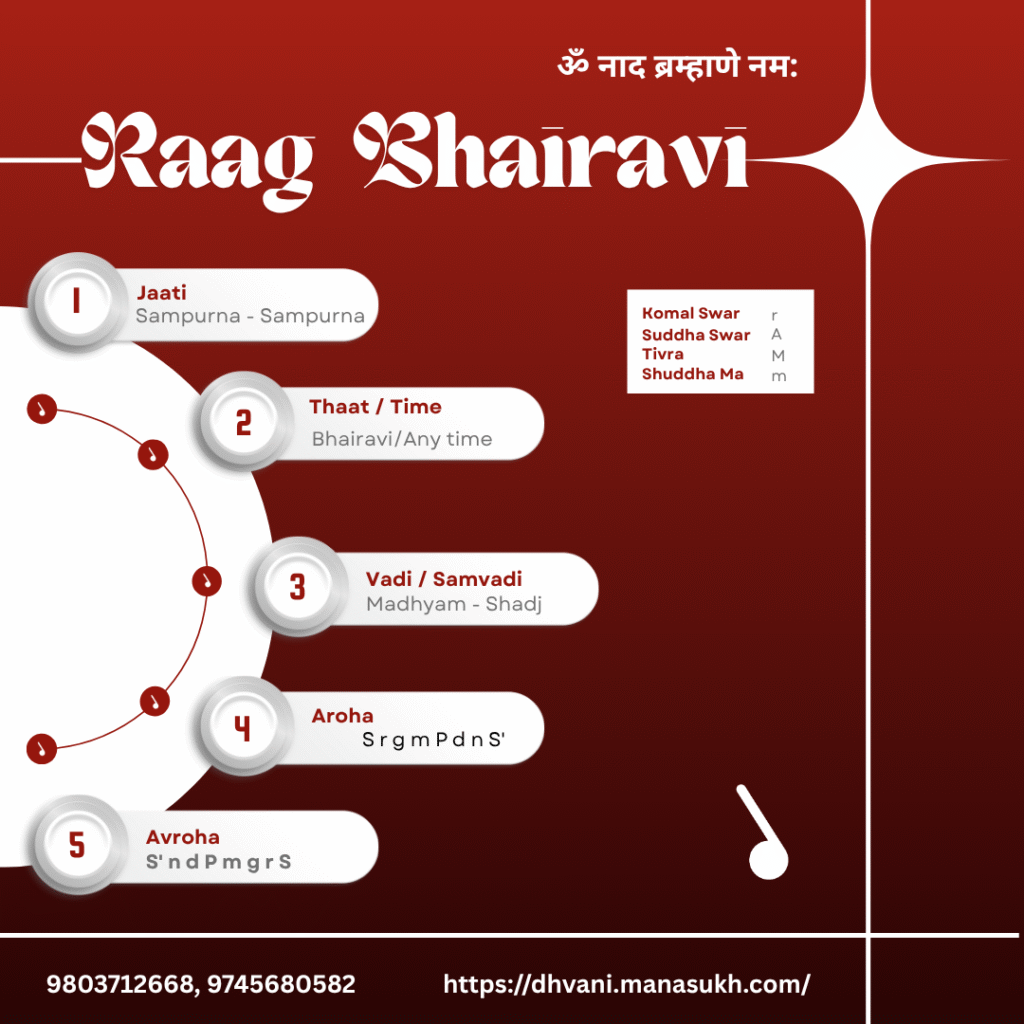
7. Raag Darbari – The Royal Court Music
Raag Darbari is like music played in a king’s palace – grand, dignified, and sophisticated. It’s considered one of the most majestic raags in classical music.
Royal Qualities:
- Traditionally sung late at night (11 PM-3 AM)
- Slow, majestic tempo
- Complex ornamentations
- Created by the famous musician Tansen
What it Feels Like: Like walking through a magnificent palace, feeling the weight of history and the beauty of royal culture.
Learning Challenge: This is an advanced raag that requires years of practice to perform properly, but beginners can appreciate its beauty.
Easy Way to Remember: “Darbar” means royal court – this is the raag fit for kings and queens.
Historical Note: Legend says Tansen created this raag in Emperor Akbar’s court, making it over 400 years old!
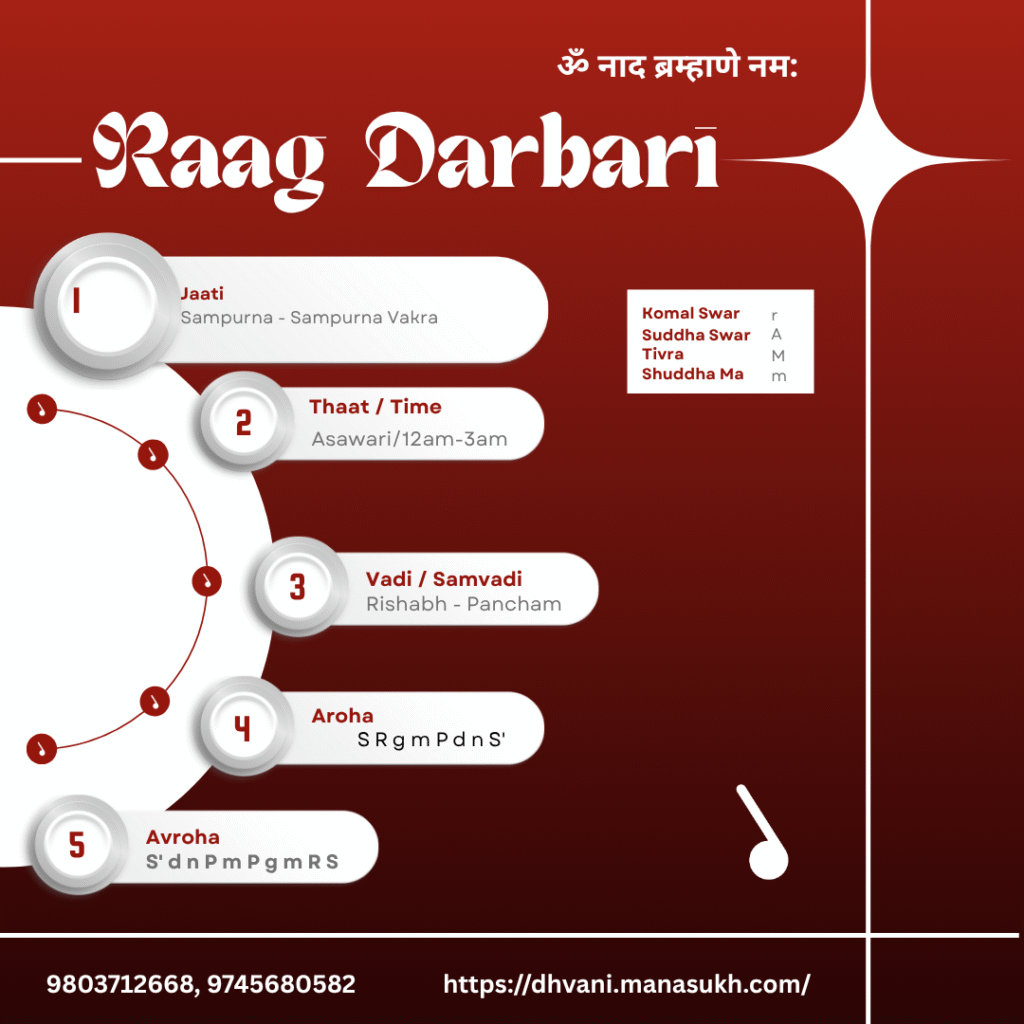
8. Raag Bageshri – The Night of Romance
Raag Bageshri is like a love letter written in musical notes. It perfectly expresses feelings of love, longing, and romantic devotion.
Romantic Features:
- Sung late evening to midnight (9 PM-12 AM)
- Gentle, flowing melodies
- Expresses love and romantic feelings
- Very popular among audiences
What it Feels Like: Like the feeling you get when you miss someone you love, or when you’re looking at the moon and thinking about someone special.
Why Students Enjoy It: The melodies flow naturally, making it easier to express emotions through music.
Easy Way to Remember: “Bag-eshri” – like “Bag of Sri (beauty)”, it’s a bag full of beautiful romantic feelings.
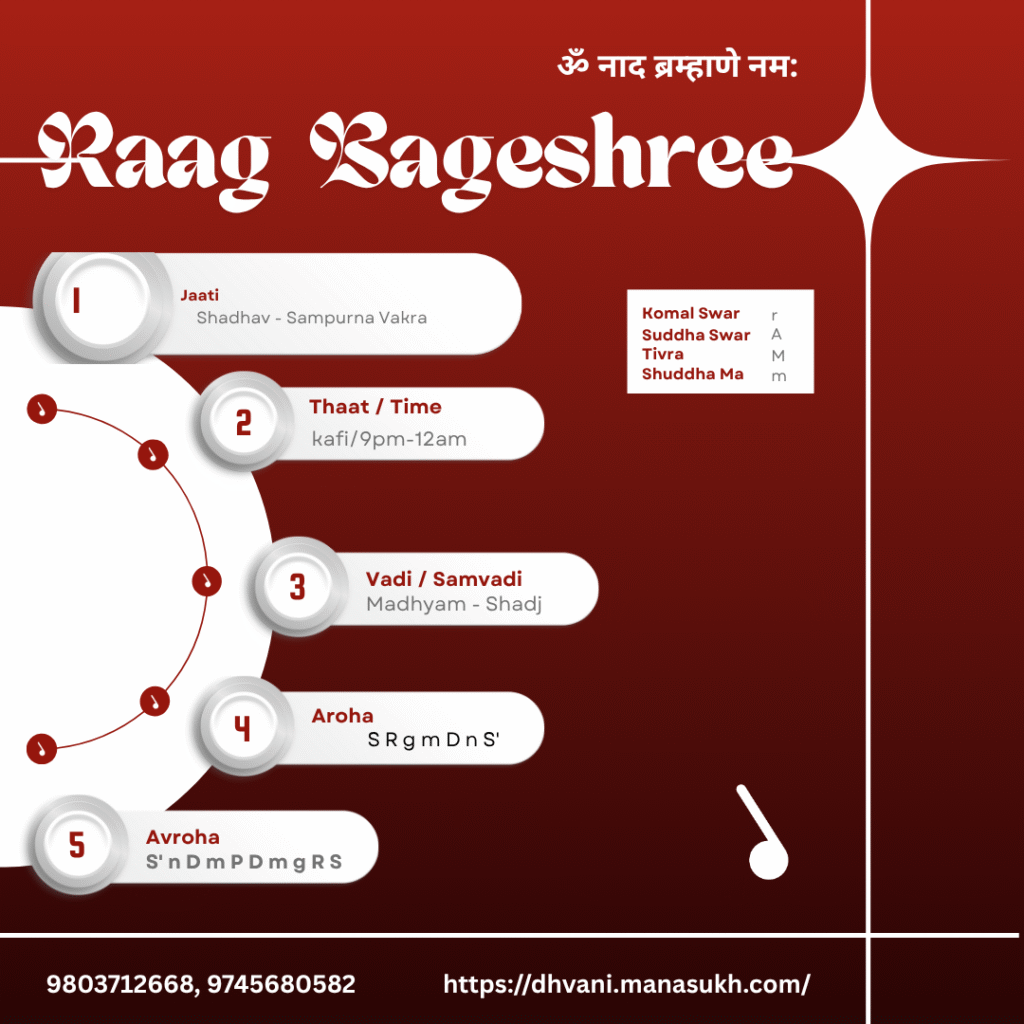
9. Raag Jog – The Balanced Mood
Raag Jog is like the perfect temperature – not too hot, not too cold, but just right. It creates a balanced, peaceful mood that appeals to everyone.
Balanced Characteristics:
- Can be sung at various times
- Neither too serious nor too light
- Good for meditation and relaxation
- Appeals to both beginners and experts
What it Feels Like: Like taking a peaceful walk in a beautiful garden on a perfect day, feeling content and balanced.
Why it’s Perfect for Students: Its balanced nature makes it forgiving for beginners while still offering depth for advanced study.
Easy Way to Remember: “Jog” like “yoga” – it brings balance and peace to your mind.
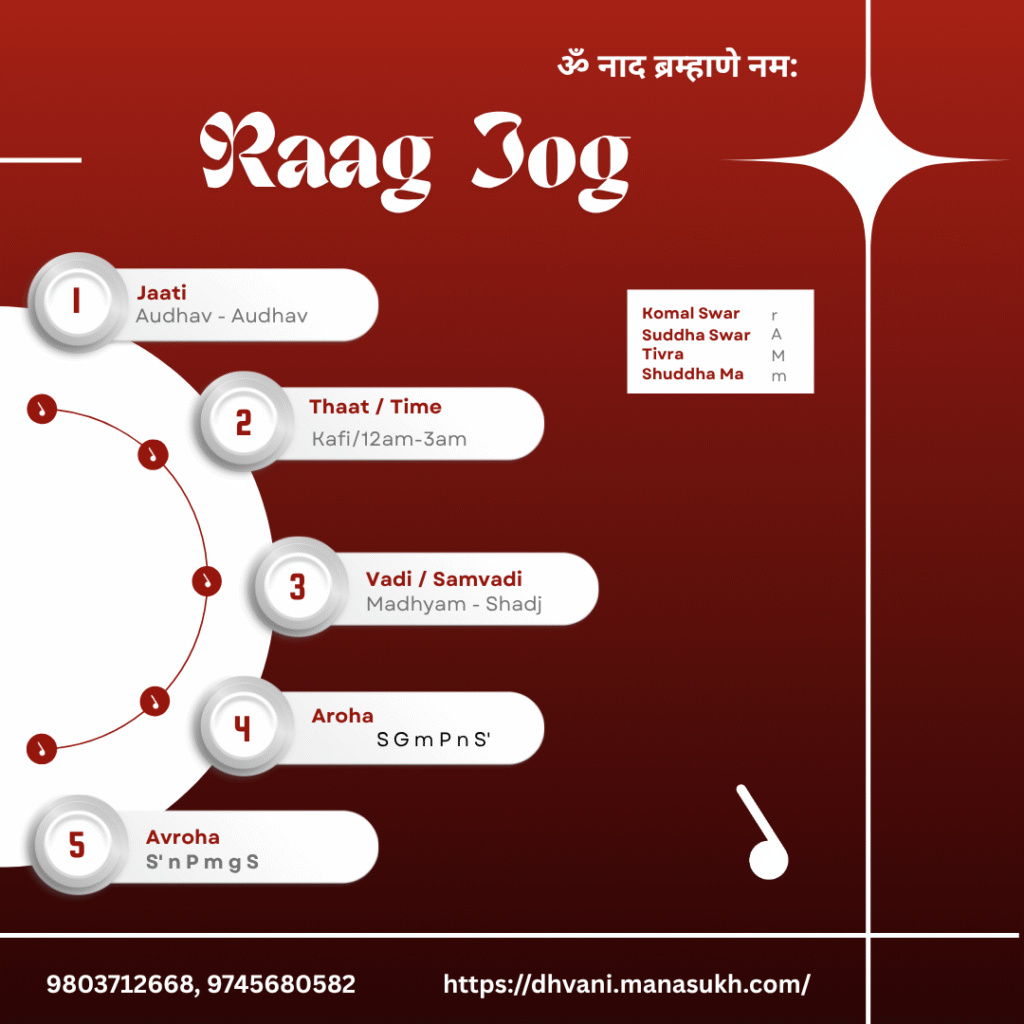
10. Raag Ahir Bhairav – The Gentle Morning
Raag Ahir Bhairav is like Raag Bhairav’s gentler cousin. It has the morning freshness of Bhairav but with a softer, more approachable character.
Gentle Morning Qualities:
- Sung in early morning (5-8 AM)
- Less intense than pure Bhairav
- Combines seriousness with accessibility
- Perfect for starting the day positively
What it Feels Like: Like waking up on a beautiful morning feeling grateful and happy, ready to start the day with positive energy.
Why Students Love It: It gives the spiritual feeling of morning raags without being as challenging as pure Bhairav.
Easy Way to Remember: “Ahir Bhairav” = “A-here Bhairav” – like saying “here’s an easier version of Bhairav.”
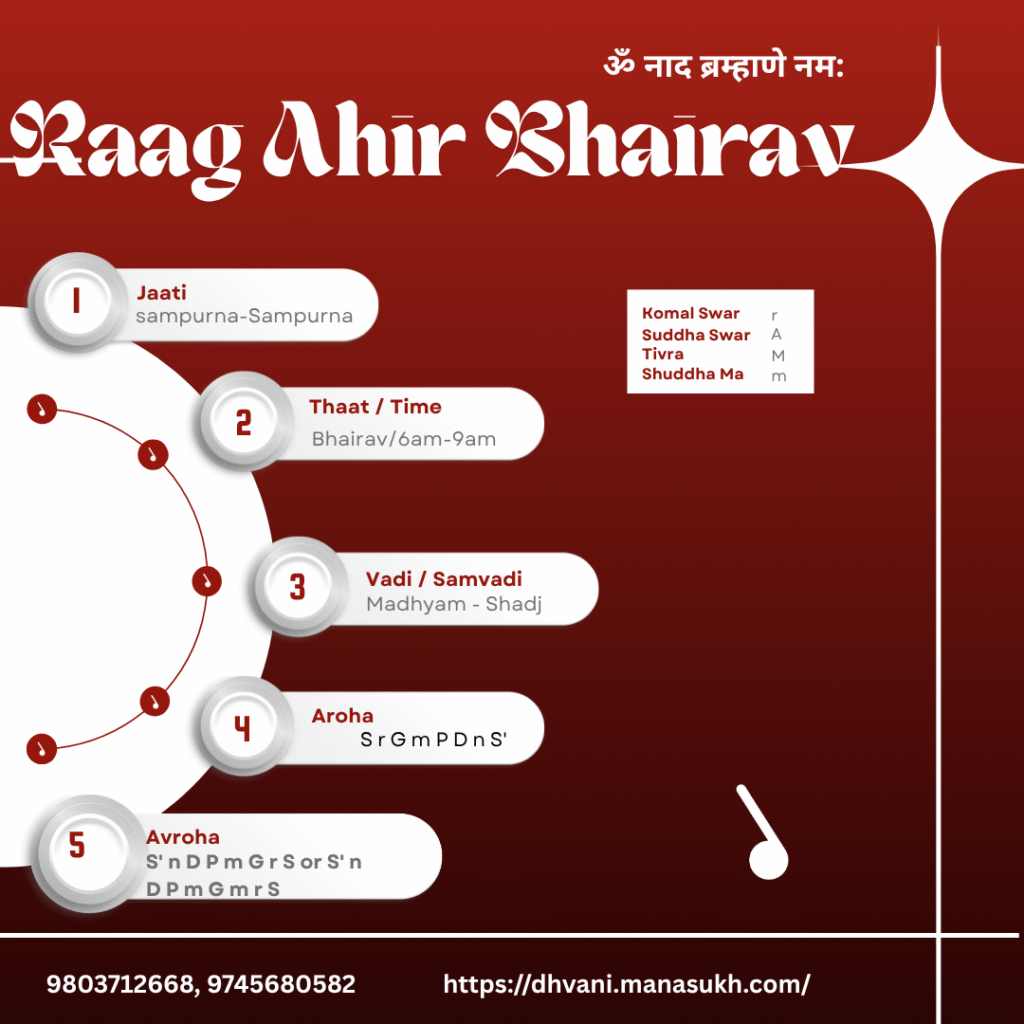
How These Raags Help Your Musical Journey
For Complete Beginners
Start With These Three:
- Raag Yaman – builds confidence and basic skills
- Raag Kafi – feels natural and familiar
- Raag Bhairav – introduces devotional singing
What You’ll Learn:
- How to use your voice properly
- Understanding of note relationships
- Different emotional expressions
- Basic classical music principles
For Intermediate Students
Add These Four:
4. Raag Bhairavi – versatility and emotional range
5. Raag Jog – balance and meditation
6. Raag Ahir Bhairav – gentle morning practice
7. Raag Bageshri – romantic expression
Skills You’ll Develop:
- More complex note patterns
- Emotional depth in singing
- Different time associations
- Performance confidence
For Advanced Students
Master These Three:
8. Raag Todi – technical challenge and beauty
9. Raag Malkauns – meditation and deep expression 1
0. Raag Darbari – classical sophistication
Advanced Abilities:
- Complex ornamentations
- Improvisation skills
- Deep emotional communication
- Traditional classical style
Learning Tips for Each Raag
Practice Schedule for Beginners
Week 1-2: Getting Started
- Listen to recordings of all 10 raags
- Start with simple Sa-Re-Ga exercises
- Choose one raag that appeals to you most
- Practice basic breathing exercises
Month 1: Foundation Building
- Focus on Raag Yaman or Kafi
- Practice basic note patterns daily
- Learn one simple song in your chosen raag
- Understand the raag’s time and mood
Month 2-3: Expanding Skills
- Add a second raag from the beginner list
- Start comparing different raags
- Practice transitioning between notes smoothly
- Learn cultural context of each raag
Month 4-6: Building Confidence
- Work on 3-4 raags from the list
- Start simple improvisation
- Perform for family and friends
- Record yourself to track progress
Common Mistakes to Avoid
Mistake #1: Rushing Through Raags
- Wrong Approach: Trying to learn all 10 raags quickly
- Right Approach: Master one raag completely before moving to the next
Mistake #2: Ignoring Time Associations
- Wrong Approach: Singing morning raags at night
- Right Approach: Respecting traditional time periods for better mood creation
Mistake #3: Focusing Only on Notes
- Wrong Approach: Just memorizing note sequences
- Right Approach: Understanding emotions and cultural context
Mistake #4: Comparing Yourself to Masters
- Wrong Approach: Getting discouraged by master recordings
- Right Approach: Celebrating your own gradual progress
Health Benefits of Learning Classical Raags
Physical Benefits
Breathing Improvement:
- Classical singing strengthens your lungs
- Deep breathing reduces stress
- Better oxygen circulation in body
- Improved voice quality and strength
Posture Benefits:
- Proper singing requires good posture
- Strengthens core and back muscles
- Reduces neck and shoulder tension
- Improves overall body alignment
Mental Benefits
Concentration Enhancement:
- Learning raags improves focus
- Memory gets stronger through practice
- Problem-solving skills develop
- Patience and discipline increase
Emotional Wellbeing:
- Different raags help process different emotions
- Reduces anxiety and depression
- Builds self-confidence
- Creates sense of achievement
Social Benefits:
- Connects you with cultural heritage
- Opportunities to perform and share
- Builds community with other music lovers
- Develops communication skills
Cultural Importance of These Raags
Preserving Ancient Wisdom
These 10 raags represent over 1000 years of musical wisdom. When you learn them, you become part of an ancient tradition that has been passed from teacher to student for generations.
What You’re Preserving:
- Musical knowledge that might be lost
- Cultural values and spiritual practices
- Artistic techniques perfected over centuries
- Connection between past and future generations
Global Recognition
Indian classical music, including these raags, is now recognized worldwide as one of the most sophisticated musical systems ever developed.
International Appreciation:
- Universities around the world teach Indian raags
- Western musicians incorporate raag principles
- Music therapy uses classical raag techniques
- Cultural exchange programs promote this knowledge
Modern Applications of Classical Raags
Music Therapy
How Raags Heal:
- Morning raags help with depression and low energy
- Evening raags reduce stress and anxiety
- Night raags improve sleep and relaxation
- Meditative raags help with focus and spiritual growth
Scientific Research Shows:
- Raag Yaman reduces blood pressure
- Raag Bhairav improves concentration
- Raag Malkauns helps with insomnia
- Raag Bageshri elevates mood
Entertainment Industry
Bollywood and Beyond:
- Many hit songs use these classical raags as foundation
- Film music composers rely on raag knowledge
- Fusion music combines raags with modern styles
- International artists collaborate using raag principles
Education and Career
Professional Opportunities:
- Music teacher and instructor
- Music therapist
- Cultural ambassador
- Recording artist and performer
Getting Started: Your First Steps
What You Need to Begin
Essential Requirements:
- Willingness to learn and practice regularly
- Basic smartphone or computer for learning resources
- Quiet space for practice
- Patience for gradual progress
Helpful But Not Essential:
- Harmonium or keyboard for pitch reference
- Recording device to track progress
- Access to qualified teacher
- Music theory books or apps
Finding Learning Resources
Online Resources:
- YouTube videos of master performers
- Music learning apps with raag lessons
- Online courses and tutorials
- Virtual music teachers
Traditional Resources:
- Local music teachers and gurus
- Classical music academies
- Cultural centers and community groups
- Music festivals and concerts
Setting Realistic Goals
First 3 Months:
- Learn 2-3 basic raags
- Understand basic music theory
- Develop regular practice habit
- Build confidence in singing
First Year:
- Master 5-6 raags from the list
- Perform simple songs confidently
- Understand cultural context
- Connect with other music learners
Long-term Goals:
- Become proficient in all 10 raags
- Start teaching others
- Perform publicly
- Continue learning advanced raags
Conclusion: Your Musical Journey Awaits
Learning the 10 most famous classical raags every music student should know is like learning the alphabet of one of the world’s most beautiful languages – the language of classical music. Each raag is a treasure that offers lifelong exploration and discovery.
Remember, every great musician started exactly where you are now with curiosity, enthusiasm, and the willingness to begin. These 10 raags have guided countless students over the centuries, and they’re ready to guide you too.
Your journey with classical raags will:
- Connect you to ancient wisdom and culture
- Develop your voice and musical abilities
- Provide tools for emotional expression and healing
- Open doors to a lifetime of musical joy and discovery
The most important step is the first one. Whether you choose to start with the gentle beauty of Raag Yaman, the devotional power of Raag Bhairav, or the familiar comfort of Raag Kafi, you’re beginning a journey that will enrich your life in ways you can’t yet imagine.
Classical music is not just about entertainment – it’s about transformation. As you learn these raags, you’ll find that they don’t just change your singing; they change how you think, feel, and connect with the world around you.
The ancient masters who created these raags understood something profound: music is a bridge between the human and the divine, between individual expression and universal truth, between the student you are today and the musician you’re destined to become.
Your voice is unique, your journey is individual, but these 10 classical raags provide a time-tested path that has guided thousands of students before you. Trust the process, enjoy the journey, and let these beautiful raags become part of your personal story.
Start today. Your musical adventure begins with a single note.
These 10 classical raags are waiting to become part of your life. Whether you’re 8 or 80, whether you think you can sing or not, these ancient musical treasures have gifts to offer you. The only question is: which raag will you meet first?

